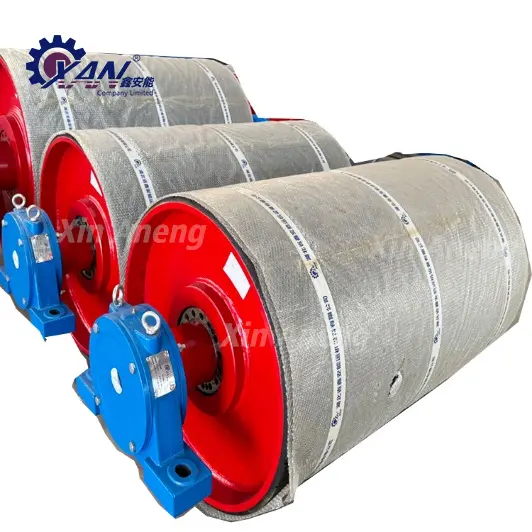What is the Main Function of Conveyor Pulleys?
2024-09-24
Conveyor systems are essential in many industries, providing an efficient way to transport materials from one point to another. A crucial component of these systems is the conveyor pulley. Understanding the main functions of conveyor pulleys can help you appreciate their role in material handling and optimize your operations.
What Are Conveyor Pulleys?
Conveyor pulleys are cylindrical devices that serve as part of the conveyor system, usually positioned at the ends or along the length of the conveyor belt. They are integral to the movement and control of the belt, making them vital for efficient material transport.
Main Functions of Conveyor Pulleys

1. Support and Guidance
One of the primary functions of conveyor pulleys is to support the conveyor belt and guide it along the intended path. By providing structural support, pulleys ensure that the belt remains aligned and functions correctly, preventing misalignment that could lead to material spillage or operational disruptions.
2. Direction Change
Conveyor pulleys enable the direction of the conveyor belt to be changed. This is particularly important in complex conveyor systems that need to navigate around corners or switch paths. By allowing for these directional changes, pulleys facilitate efficient material flow and maximize space utilization in warehouses and production facilities.
3. Driving Force
Drive pulleys, often referred to as head pulleys, are powered by motors to move the conveyor belt. They play a critical role in generating the force needed to transport materials, making them essential for the overall functioning of the conveyor system. Without drive pulleys, the conveyor belt would not operate effectively.
4. Tension Maintenance
Proper tension is crucial for the efficient operation of a conveyor belt. Pulleys help maintain this tension, which is necessary to prevent slippage and ensure smooth operation. The right tension also minimizes wear and tear on the belt, extending its lifespan and reducing maintenance costs.
5. Load Distribution
Conveyor pulleys are designed to distribute the load evenly across the conveyor belt. This function is vital for minimizing stress on the belt and the entire conveyor system. By ensuring that weight is evenly spread, pulleys help reduce the risk of damage and increase the overall efficiency of material handling.
Conclusion
Conveyor pulleys may seem like simple components, but they serve multiple essential functions that are critical to the effectiveness of conveyor systems. From supporting and guiding the belt to driving movement and maintaining tension, pulleys play a vital role in ensuring smooth and efficient material transport. Understanding these functions can help businesses optimize their operations, improve efficiency, and reduce costs. Whether in manufacturing, warehousing, or distribution, the importance of conveyor pulleys cannot be overstated.


